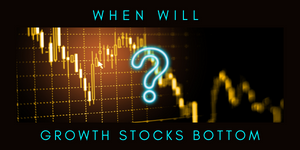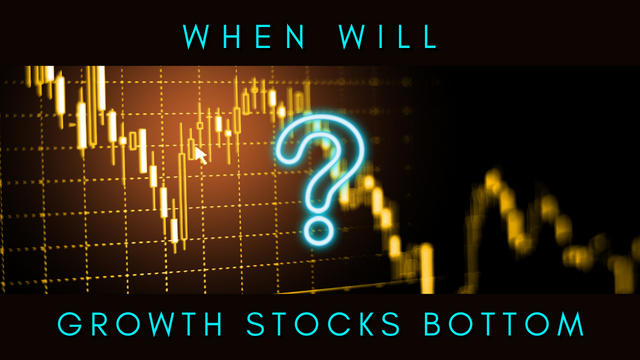
When Will Growth Stocks Bottom
The macro-outlook sure is tough. Between sticky inflation, a hawkish Fed, slowing growth, fresh China lockdowns, Europe’s recession and a soaring dollar, economic visibility doesn’t get much worse than this!
It’s no surprise growth stocks have cooled off as safer, dividend paying stocks outperform. That’s bad news for the tech-heavy S&P 500. So, many are wondering, when will growth stocks bottom?

With the macro this murky it pays to keep things simple. Today, I’ll show you the single best macro indicator that you can pair with MAPsignals’ Big Money Index (BMI) to tell when this bear market is over. That’s a powerful 1, 2 punch!
Then, I’ll show you which sectors offer the best risk-reward, and the types of stocks you want to lean into.
Alright, let’s get to it.
When Will Growth Stocks Bottom – Follow the 2-Year Treasury Yield
Growth stocks will likely bottom once yields backup. Said simply, falling 2-year Treasury yields will signal the bulls are back in charge.
Let me explain.
The bull case for growth stocks hinges on an economic soft landing. Here’s what that means: growth slows enough to keep inflation falling from its spring peak. This frees the Fed to slow its aggressive rate hiking campaign, helping the economy dodge a deep recession. Corporate earnings keep grinding higher and the tech-heavy S&P 500 resumes its bull run.
Sounds pretty sweet right? Here’s the rub, history shows soft landings are hard to pull off. Since 1950, we’ve seen 13 Fed tightening cycles. All but 3 ended in recession. That’s why growth stocks keep struggling. Investors think the Fed will inevitably trigger a recession as they tighten to cool inflation.
The 2-year Treasury yield is the best real time market proxy for where the Fed funds rate is heading.
Stocks ripped higher when 2-year yields pulled back in mid-June and MAPsignals’ BMI went oversold for the first time since 2020 Covid lows. But as markets have discounted more aggressive Fed tightening since Jackson Hole, 2-year yields have surged back up to new highs, snuffing out the summer rebound (chart).
Growth stocks won’t bottom until 2-year Treasury yields start trending lower. Falling 2-year bond yields are bullish because they signal peak Fed hawkishness is behind us. That lowers recession risk. That’s your green light to buy growth stocks. Remember, stocks follow bond yields.
Below, notice how when 2-year yields climb, growth stocks fall:

As you can see, the inverse relationship between the 2-year yield and growth stocks has been strong since early 2022.
Now, let me show you how you can follow along at home.
How to Play It?
- Until two-year yields start trending lower, stick with energy, utilities, staples, and health care stocks. They are seeing the most Big Money buying and have the highest MAPsignals’ scores (chart).
- High-yielding stocks in safer sectors like consumer staples, utilities, and health care offer dependable, all-weather profits that help them outperform in volatile, recessionary times.
- Don’t give up on energy after recent profit taking. It still sports a high MAPsignals sector score at 66. It’s also the cheapest sector in the S&P 500 trading at only 8.7X forward earnings and the highest yielding with a 4% payout.
- Platinum subscribers can access MAPsignals’ top stock picks by sector here.
- And remember, keep a healthy cash reserve that you can use to leg into cheap, blue-chip growth stocks in the tech, discretionary, communications, financials, and industrials sectors as they decline. As Fed uncertainty eases, you’ll be glad you did.

Bringing It All Together
Volatility will get worse if the Fed keeps raising rates aggressively. The central bank could easily tip a weakening US economy into recession. Slowing growth in China and Europe only compounds the risk.
All this could dent corporate earnings more than expected, forcing stocks lower as fundamentals weaken.
A persistent downtrend in 2-year Treasury yields will signal peak Fed hawkishness is behind us. That will ease recession fears and boost investor risk appetite. Until then, stay nimble.
That doesn’t mean panicking out of stocks. Instead, focus on high yielding, best of breed, defensive stocks with strong pricing power that are attracting Big Money inflows.
And remember, stocks follow bond yields!
Invest well,
-Alec
